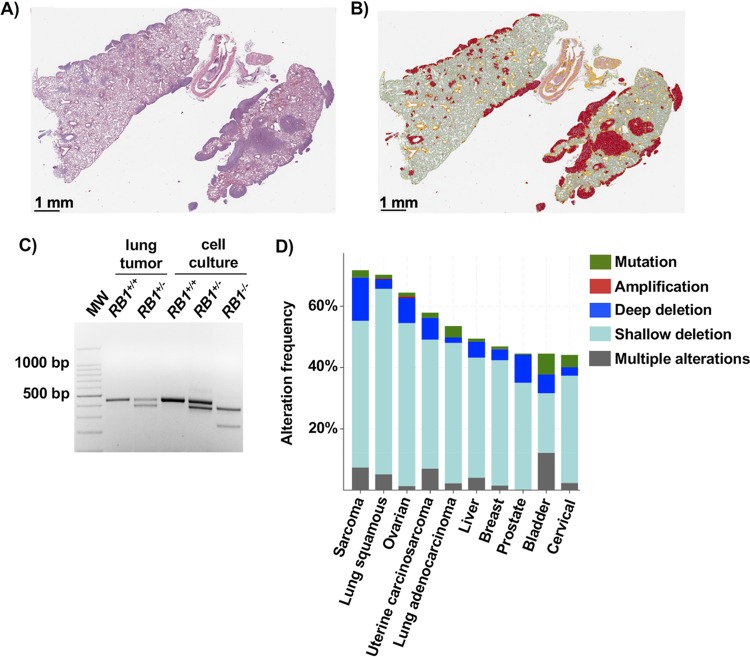FIG 8.
Single-copy loss of RB1 can create cancer-enabling phenotypes. (A) H&E staining of lung tissue with the highest number of RB1+/− seeding events. (B) QuPath coloring to denote tumor tissue within these lungs (red). (C) DNA was extracted from nodules of tumor cells in paraffin-embedded tissue containing these RB1+/− cells or an RB1+/+ control. PCR was performed to amplify exon 22 from recovered DNA and controls isolated from cell culture to verify the final genotype of cells in this sample. (D) The 10 most prevalent cancers were analyzed for RB1 gene alterations using TCGA and Pan-Cancer Atlas data, using cBioPortal. A deep deletion is consistent with biallelic loss of RB1, whereas a shallow deletion is suggestive of heterozygous RB1 deletion.

